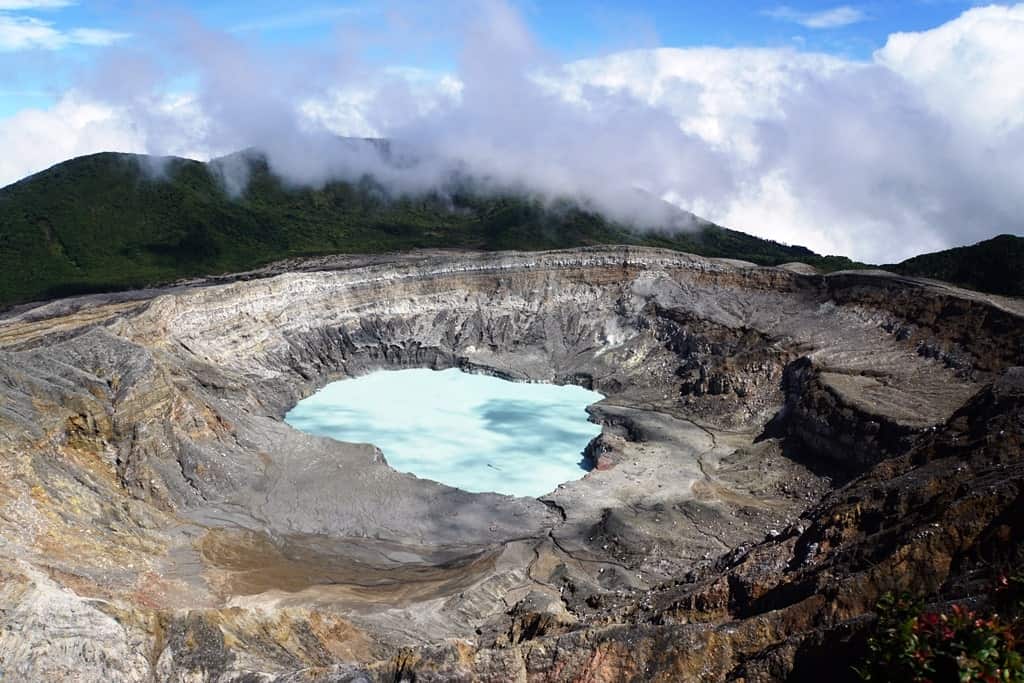Costa Rica is home to nearly 70 volcanos. The vast majority of these volcanoes now lay dormant – that is, volcanoes that haven’t erupted in a very long time, but may erupt still – whilst others still remain incredibly active. An exciting twist to Costa Rican geology.
One of the most popular active volcanoes in Costa Rica is Poas. And you’re in luck. Unlike some other volcanoes to be found in the county, Poas remains relatively close to the capital city of San Jose; just over an hour North of the city, in fact. Here, you will enter the Central Highlands and Poas National Park.
When one envisions Costa Rica, sandy stretches of tropical beaches or great rainforests inundated with giant trees may spring to mind. Perhaps you think of the sweltering sun radiating down. Well, a trip to Poas Volcano will leave you questioning your views on Costa Rica.
At just shy of 3000 meters high, the air as you approach the crater becomes noticeably colder and thinner. In the thinning air, and closer to the sun, be careful you don’t burn to a crisp (even in the cooler climate).
The typical rainforest ideology is no more. Instead, a vast cloud forest ecosystem can be found. Unlike rainforests, with some trees stretching into the canopy for over 70 meters, many trees found in the cloud forest appear severely disfigured and gnarled, warped into all manner of mysterious shapes.
The unpredictability of the climatic conditions upon the slopes of Poas alters the life that can be found here. Endemic species, or species that are found nowhere else, thrive on these secretive slopes. Heavy rainfall of approximately 3700mm per year characterizes the local climate, with the rainiest months around May to October.
Check out: The best day trips from San Jose Costa Rica.
Disclaimer: This post contains affiliate links. This means that should you click on certain links, and then subsequently purchase a product, I will receive a small commission.
Table of Contents
Everything You Need to Know About Poas Volcano
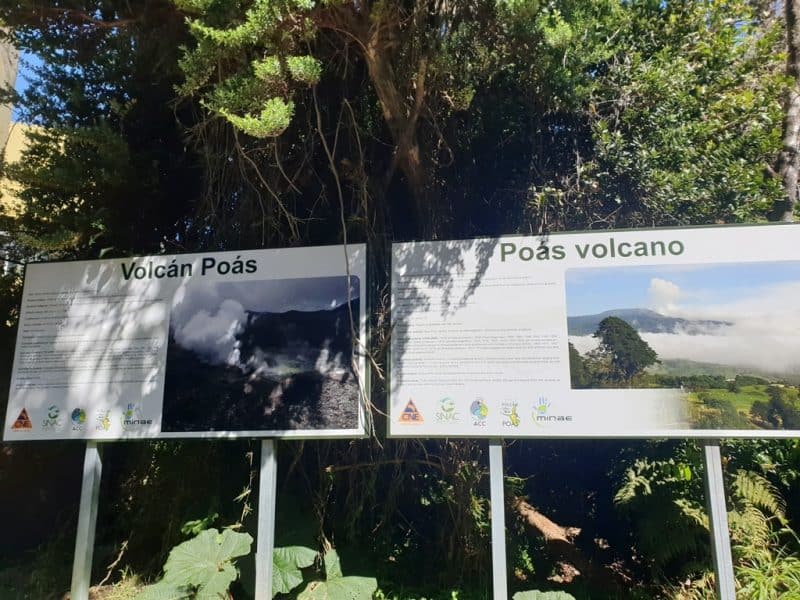
History of Poas Volcano
In a collaborative effort of scientists and Costa Rican activists, Poas Volcano became a designated National Park in 1971. Leading the effort, was renowned biologist Mario Boza, who lobbied for this great achievement. Ultimately, he, along with other established biologists, persuaded the Costa Rican government to create the countries’ first National Park.

Now, and covering an area close to 16000 acres, Poas Volcano is one of the nation’s top touristic destinations. A wealth of reasons bring tourists flocking to the slopes of this active volcano, from the incredible diversity of nature and flourishing ecosystems to the exciting geothermal activity.
Recommended tours to Poas Volcano:
Poás Volcano, Coffee Plantation & La Paz Waterfall Gardens
San Jose: Poas Volcano Half-Day Private Tour
What to expect from Poas Volcano
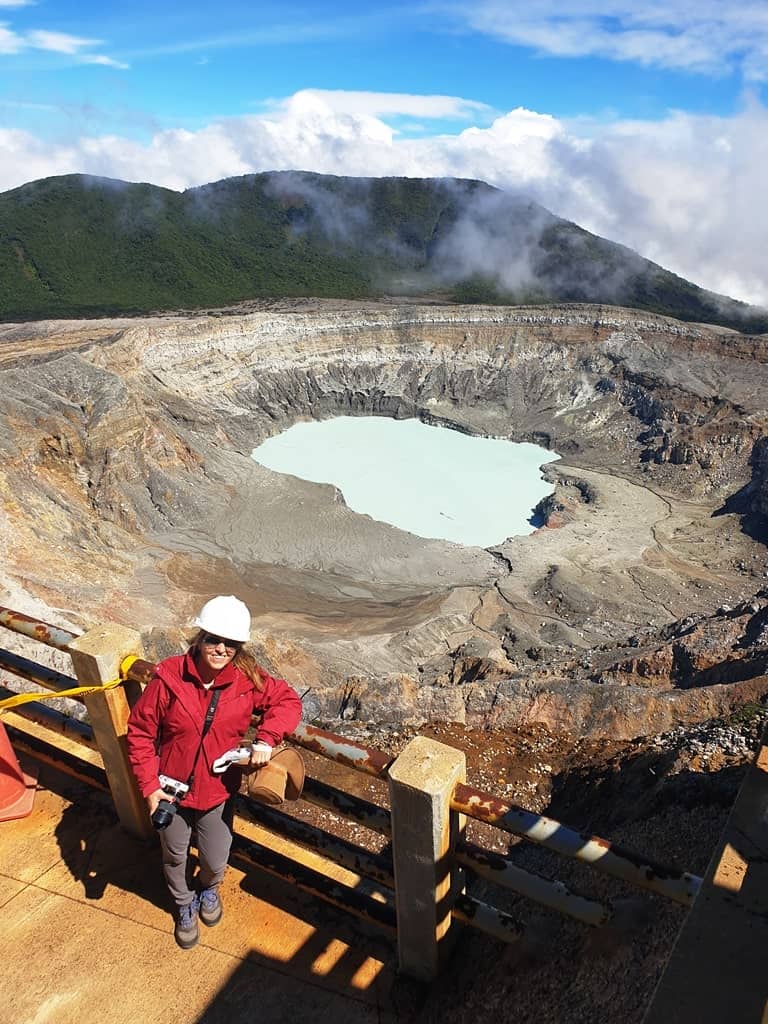
Once one of the country’s most active volcanoes, great eruptions of volatile nature forced the park to close for a significant period of time. Today, the park is still yet to fully open, with many of the trails closed off from the public. T
he most recent recording of explosive and violent eruptions was dated back to 1954, however, since then, Poas has seen bursts of activity, including rock flows and ash clouds. The last recorded activity was in September 2019.
Because of the unpredictability of nature, and the quantity of potentially harmful gases around the crater, guests are limited to just 20-minute observation slots at the summit. The price of admission for non-residents is $15, but just 1000 colones for residents.
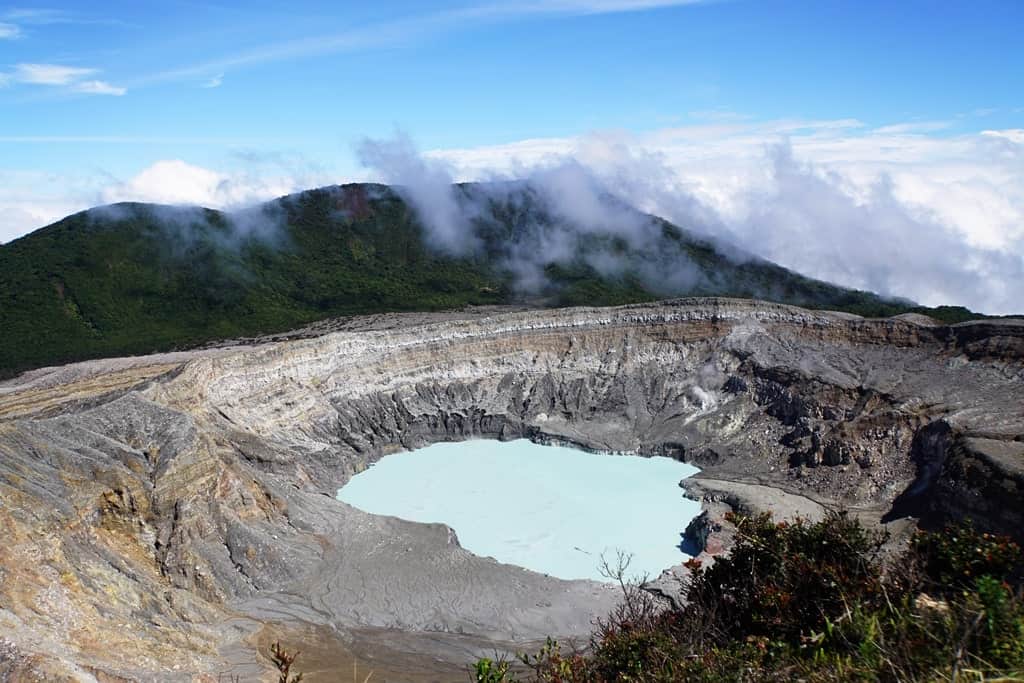
Included in this price is an informative lecture-style briefing in a nearby auditorium, which informs guests of the history of Poas and what to expect. Safety equipment, including hard hats, will be distributed among guests.
The volcano itself offers some of the most spectacular views in all of Costa Rica. It is best to reserve a spot early in the morning to have the best chances of a clear, cloudless view. But with the ever-changing climatic conditions, of course, this is not guaranteed. Arriving at the information center, a 10-minute walk to the crater will allow you to immerse yourself within the cloud forest experience.
The crater of Poas Volcano is one of the largest crater lakes in the world, spanning over a mile across and reaching depths of an impressive 320 meters. There are two lakes that can be found within the crater, each filling with rainwater to offer stunning scenery.
The chemical properties within the crater determine the color of the lakes, as chemical reactions take place.
Despite being within the same crater, the two lakes are incredibly contrasting. One is highly volatile and typical of a volcanic lake, whilst the other remains inert, or chemically inactive. From a bird’s eye view, you can actively see the incredible differences as a result of volcanic activity: one crater lake is surrounded by dense foliage and life, the other a barren void of life, scared into the landscape.
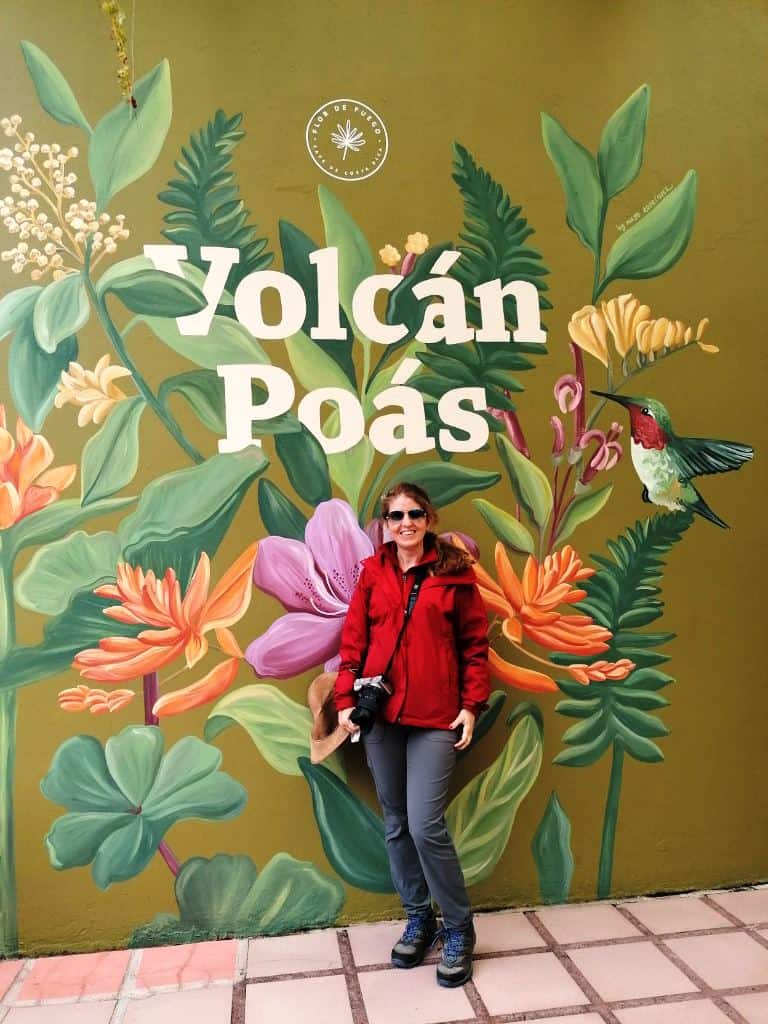
From Poas’s viewpoint, you will witness the active lake that yields a mesmerizing, bright blue coloration. As inviting as the water looks, the low pH of the water makes the lake incredibly acidic. Best to avoid taking a dip here.
You will be able to see hot geysers and steam rising from the many fumaroles around the crater lake, giving a contrasting appearance to the black, ominous rock faces. Seeping rainwater from the lake makes its way into the cervices within the rocks, building continuous pockets of steam.
Getting to Poas Volcano
As one of the closest National Parks to the main International Airport, the roads to Poas are well paved and marked. There are multiple ways of reaching Poas, but the easiest is to follow the 712 highway that cuts through Alajuela and meanders up the Southern slope.
At the town of Fraijanes, merge onto 146 and then road 120 directly to the National Park entrance. Without traffic, you are looking at a journey time of between 1-1.5 hours.
Alternatively, buses are available from San Jose at 8.30 am. This option typically takes around 2 hours to reach the National Park. However, due to the infrequency of public transport here, this may be a more challenging route to take. There is only one departing bus from Paos per day, departing at 2:30 pm. Be sure not to miss this.
Recommended tours to Poas Volcano:
Poás Volcano, Coffee Plantation & La Paz Waterfall Gardens
San Jose: Poas Volcano Half-Day Private Tour
Things to do near Poas Volcano
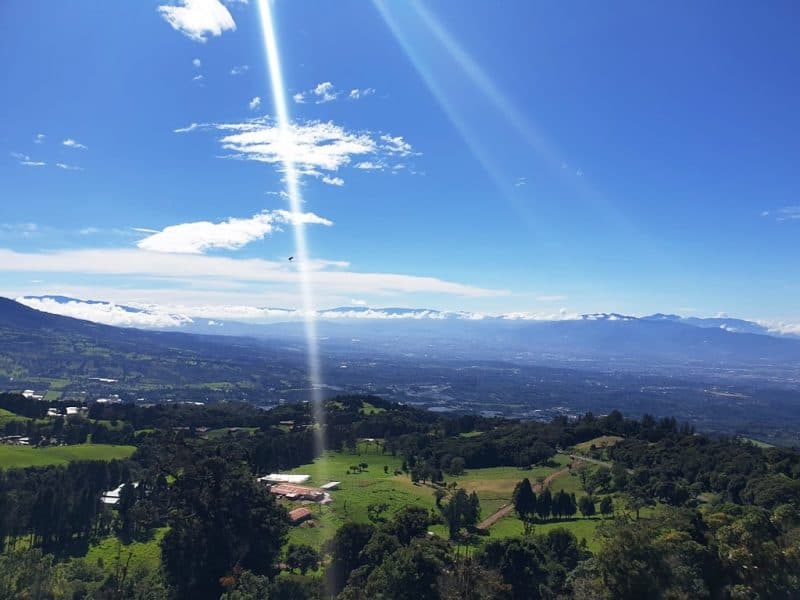
Due to the recent volcanic activity, many of the trails around the crater and to the second lake remain closed. However, in the case of a full reopening, these trails offer the opportunity to spot an array of local wildlife.
There are multiple trails, ranging from 0.3 to 0.9 miles in length, that allow visitors a chance to appreciate the stunning landscape of twisted trees; home to a multitude of species, including the endemic Poas squirrel.
You might also like: A Guide to Sarchi, Costa Rica.
Moving away from the crater of the volcano, the surrounding slopes offer a haven of activities and sights. Year-long, the famous Poas strawberries, or fresas de Poas, can be found growing on the slopes – one of the only places in Costa Rica where you can find naturally growing strawberries. Try with chocolate sauce and/or condensed milk, for a sweet treat.
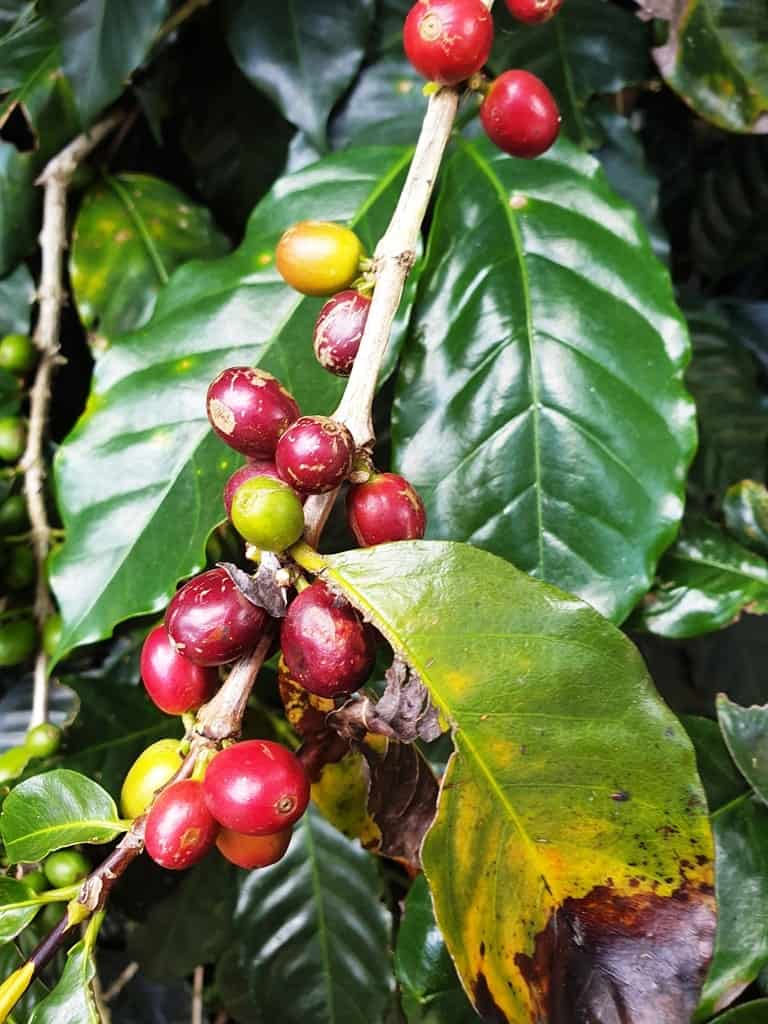
Other habitats and ecosystems can also be found, at a slightly lower elevation than the crater. Waterfalls are frequently found, cutting through the rainforest habitats. A contrasting habitat to the higher elevation cloud forest, highland rainforests are more humid and offer a higher species diversity. The perfect place for wildlife spotting. Remember to pack a raincoat and sweater.
Coffee is also grown readily upon the slopes of Poas. The rich, fertile lands create the ideal growing environment for coffee. Book a Poas coffee tour to discover the secrets behind this beloved warm beverage.
FAQ About Poas Volcano
Poas Volcano is open daily from 8:00 am to 4:00 pm including holidays,
Absolutely. The view of the crater is amazing as long as there are no clouds covering it. It is recommended to visit early in the morning for a better chance to see the crater without clouds.

